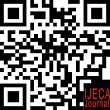Digital Technology in Midwifery Education and Training: Advancing Competences and Clinical Practices
Abstract
Keywords
Full Text:
DOWNLOAD [PDF]References
Adeyemo, O. O., Morelli, E. E., & Kennedy, H. P. (2022). How to Foster Effective Midwife–Obstetrician Collaboration on Labor and Birth Units: Qualitative Analysis of Experiences of Clinicians in the United States. Journal of Midwifery & Women S Health, 67(5), 552–560. https://doi.org/10.1111/jmwh.13382
Alsweiler, J. M. (2023). Midwife or Doctor Leader to Implement a National Guideline in Babies on Postnatal Wards (DesIGN): A Cluster-Randomised, Controlled, Trial. Plos One, 18(9), e0291784. https://doi.org/10.1371/journal.pone.0291784
Awad, A., Trenfield, S. J., Pollard, T. D., Ong, J. J., Elbadawi, M., McCoubrey, L. E., Goyanes, A., Gaisford, S., & Basit, A. W. (2021). Connected healthcare: Improving patient care using digital health technologies. Advanced Drug Delivery Reviews, 178(1), 113958. https://doi.org/10.1016/j.addr.2021.113958
Bäckström, C., Knez, R., & Larsson, M. (2023). Healthcare Professionals’ Perceptions of a Digital Parental Support, Childbirth Journey, Constructed as a Serious Game—An Intervention Study. Frontiers in Digital Health, 5. https://doi.org/10.3389/fdgth.2023.1141350
Bergen, N., Hudani, A., Asfaw, S., Mamo, A., Kiros, G., Kurji, J., Morankar, S., Abebe, L., Kulkarni, M. A., & Labonté, R. (2019). Promoting and delivering antenatal care in rural Jimma Zone, Ethiopia: a qualitative analysis of midwives’ perceptions. BMC Health Services Research, 19(1), 719. https://doi.org/10.1186/s12913-019-4596-x
Brown Wilson, C., Slade, C., Wong, W. Y. A., & Peacock, A. (2020). Health care students experience of using digital technology in patient care: A scoping review of the literature. Nurse Education Today, 95(1), 104580. https://doi.org/10.1016/j.nedt.2020.104580
Cho, I. (2023). Frameworks for Evaluating the Impact of Safety Technology Use. Healthcare Informatics Research, 29(2), 89–92. https://doi.org/10.4258/hir.2023.29.2.89
DeLeo, A., & Geraghty, S. (2018). iMidwife: midwifery students’ use of smartphone technology as a mediated educational tool in clinical environments. Contemporary Nurse, 54(4–5), 522–531. https://doi.org/10.1080/10376178.2017.1416305
Erlandsson, K., Byrskog, U., Osman, F., Pedersen, C., Hatakka, M., & Klingberg-Allvin, M. (2019). Evaluating a Model for the Capacity Building of Midwifery Educators in Bangladesh Through a Blended, Web-Based Master’s Programme. Global Health Action, 12(1), 1652022. https://doi.org/10.1080/16549716.2019.1652022
Giena, V. P., Sari, R. M., Sasmita, F. N., & Rahmawati, I. (2022). Developing a Mobile Application as a Learning Medium on Maternal Emergencies Related to Postpartum Hemorrhage. Journal of Public Health and Development, 20(1), 38–50. https://doi.org/10.55131/jphd/2022/200104
Iis, I., Nurhayati, S., Kartika, P., & Ahsan, M. H. (2025). Socio-Economic Empowerment Through Community-Based Sheep Farming Programs In Islamic Rural Societies. Ijtimaiyya: Jurnal Pengembangan Masyarakat Islam, 17(2), 1–24. https://doi.org/https://dx.doi.org/10.24042/ijpmi.v17i2.24572
Iskandar, A., Winata, W., Kurdi, M. S., Sitompul, P. H. S., Kurdi, M. S., Nurhayati, S., Hasanah, M., Haluti, F., & others. (2023). Peran Teknologi Dalam Dunia Pendidikan. Yayasan Cendekiawan Inovasi Digital Indonesia. https://idr.uin-antasari.ac.id/25528/1/new%20FULL%20BOOK%20PERAN%20TEKNOLOGI%20DALAM%20DUNIA%20PENDIDIKAN.pdf
Iswahyudi, M. S., Wulandari, R., Samsuddin, H., Sukowati, I., Nurhayati, S., Makrus, M., Amalia, M. M., Faizah, H., Febianingsih, N. P. E., & others. (2023). Buku Ajar Metodologi Penelitian. PT. Sonpedia Publishing Indonesia. https://buku.sonpedia.com/2023/09/buku-ajar-metodologi-penelitian.html
Kalu, F. A., & Chukwurah, J. N. (2022). Midwives’ experiences of reducing maternal morbidity and mortality from postpartum haemorrhage (PPH) in Eastern Nigeria. BMC Pregnancy and Childbirth, 22(1), 474. https://doi.org/10.1186/s12884-022-04804-x
Lau, K. H. V., & Greer, D. M. (2022). Using Technology Adoption Theories to Maximize the Uptake of E-learning in Medical Education. Medical Science Educator, 32(2), 545–552. https://doi.org/10.1007/s40670-022-01528-7
Lee, W., Shickh, S., Assamad, D., Luca, S., Clausen, M., Somerville, C., Tafler, A., Shaw, A., Hayeems, R., & Bombard, Y. (2023). Patient-facing digital tools for delivering genetic services: a systematic review. Journal of Medical Genetics, 60(1), 1–10. https://doi.org/10.1136/jmg-2022-108653
Maha, C. C. (2024). Revolutionizing Community Health Literacy: The Power of Digital Health Tools in Rural Areas of the US and Africa. GSC Advanced Research and Reviews, 19(2), 286–296. https://doi.org/10.30574/gscarr.2024.19.2.0189
Miao, J., & Ma, L. (2022). Students’ Online Interaction, Self-Regulation, and Learning Engagement in Higher Education: The Importance of Social Presence to Online Learning. Frontiers in Psychology, 13. https://doi.org/10.3389/fpsyg.2022.815220
Milyane, T. M., Darmaningrum, K., Natasari, N., Setiawan, G. A., Sembiring, D., Irwanto, I., Kraugusteeliana, K., Fitriyah, N., Sutisnawati, A., Sagena, U., Nurhayati, S., Indriana, I. H., & Putri, M. S. (2023). Literasi Media Digital. https://store.penerbitwidina.com/product/literasi-media-digital/
Misago, N., Habonimana, D., Ciza, R., Ndayizeye, J. P., & Kimaro, J. K. A. (2023). A Digitalized Program to Improve Antenatal Health Care in a Rural Setting in North-Western Burundi: Early Evidence-Based Lessons. Plos Digital Health, 2(4), e0000133. https://doi.org/10.1371/journal.pdig.0000133
Morris, M. E., Brusco, N. K., Jones, J., Taylor, N., East, C., Semciw, A., Edvardsson, K., Thwaites, C., Bourke, S. L., Khan, U. R., Fowler-Davis, S., & Oldenburg, B. (2023). The Widening Gap Between the Digital Capability of the Care Workforce and Technology-Enabled Healthcare Delivery: A Nursing and Allied Health Analysis. Healthcare, 11(7), 994. https://doi.org/10.3390/healthcare11070994
Muhindo, M., Bress, J., Kalanda, R., Armas, J., Danziger, E., Kamya, M. R., Butler, L., & Ruel, T. (2021). Implementation of a Newborn Clinical Decision Support Software (NoviGuide) in a Rural District Hospital in Eastern Uganda: Feasibility and Acceptability Study. Jmir Mhealth and Uhealth, 9(2), e23737. https://doi.org/10.2196/23737
Mukhalalati, B., & Taylor, A. (2019). Adult Learning Theories in Context: A Quick Guide for Healthcare Professional Educators. Journal of Medical Education and Curricular Development, 6. https://doi.org/10.1177/2382120519840332
Musa, S., Nurhayati, S., Muhyiddin, Y., & Siswanto. (2024). Evaluation of Digital Literacy Training Program Intended for Parental Digital Skills Improvement in Reference to Child Upbringing in a Rapidly Changing Digital Era. International Journal of Applied Engineering and Technology, 1(VI), 617–627.
Musa, S., Nurhayati, S., & Wasliman, I. (2025). Digital Literacy Training Efficacy for Improving Educators and Educational Workforces’ Digital Skill. Korean Conference on Education 2024, IAFOR. https://papers.iafor.org/wp-content/uploads/papers/kce2024/KCE2024_87220.pdf
Muxamuud, X. (2024). A Collaborative Development Initiative to Strengthen Midwifery Education in Somalia. Somali Health Action Journal, 4(1). https://doi.org/10.36368/shaj.v4i1.459
Nove, A., ten Hoope-Bender, P., Boyce, M., Bar-Zeev, S., de Bernis, L., Lal, G., Matthews, Z., Mekuria, M., & Homer, C. S. E. (2021). The State of the World’s Midwifery 2021 report: findings to drive global policy and practice. Human Resources for Health, 19(1), 146. https://doi.org/10.1186/s12960-021-00694-w
Nurhayati, S. (2024). Digital literacy in adult continuing education: implementation, best practices, and emerging trends. Novateur Publications, 1(1), 9–18. https://novateurpublication.org/index.php/np/article/view/237
Nurhayati, S., Fitri, A., Amir, R., & Zalisman, Z. (2024). Analysis of the Implementation of Training on Digital-based Learning Media to Enhance Teachers’ Digital Literacy. AL-ISHLAH: Jurnal Pendidikan, 16(1), 545–557. https://doi.org/10.35445/alishlah.v16i1.4029
Nurhayati, S., & Handayani, F. A. (2025). Project-Based Business Management Training For Women’s Entrepreneurial Skills Development. Jurnal Visi Ilmu Pendidikan, 17(1). page 28-39. https://doi.org/10.26418/jvip.v17i1.83520
Nurhayati, S., Kurnianta, P. D. M., & Anggraeni, A. F. (2024). Pengantar Karya Tulis Ilmiah. PT. Sonpedia Publishing Indonesia. https://buku.sonpedia.com/2024/06/pengantar-karya-tulis-ilmiah.html
Nurhayati, S., & Musa, S. (2020). Analysis of Students’ Internet Utilization to Improve Public Information Literacy in the Industrial Revolution Era 4.0. Society, 8(2), 557–566. https://doi.org/10.33019/society.v8i2.231
Nurhayati, S., & Musa, S. (2025). Teaching With Purpose: Indonesian Educators’ Response to The Challenges of Society 5.0. International Conference on Research in Education and Science, ISTES, 360–372. https://www.researchgate.net/publication/388279350_Teaching_With_Purpose_Indonesian_Educators'_Response_to_The_Challenges_of_Society_50
Nurhayati, S., & Susanto, S. (2024). Fostering Young Muslims’ Digital Entrepreneurship through Computer Technician Education. JIE (Journal of Islamic Education), 9(2), 806–825. https://doi.org/https://doi.org/10.52615/jie.v9i2.450
O’Connor, S., Jolliffe, S., Stanmore, E., Renwick, L., Schmitt, T., & Booth, R. (2017). A Mixed Study Systematic Review of Social Media in Nursing and Midwifery Education: Protocol. Journal of Advanced Nursing, 73(8), 1989–1996. https://doi.org/10.1111/jan.13310
Setiadi, D., Nurhayati, S., Ansori, A., Zubaidi, M., & Amir, R. (2023). Youth’s digital literacy in the context of community empowerment in an emerging society 5.0. Society, 11(1), 1–12. https://doi.org/https://doi.org/10.33019/society.v10i2.491
Sugiyono, P. (2019). Metode Penelitian Kuantitatif Kualitatif dan R&D (D. Sutopo. S. Pd, MT, Ir. Bandung: Alfabeta.
Sulkipani, S., Afnarius, S., Sudrajat, S., Santoso, I., Nurhayati, S., Halim, L., Mutia, A. S., Argadinata, H., Jayanti, N. R., & Arromal, F. (2024). Teknologi Pendidikan.
Susanti, M., & Nurhayati, S. (2024). Exploring Digital Literacy Usage For Self-Directed Learning: Rural Adolescents’ Perspectives. Jurnal Visi Ilmu Pendidikan, 16(1), 1. https://doi.org/10.26418/jvip.v16i1.67216
Tiarawati, P. V., Nurhayati, S., Hidayah, S. N., & Boriboon, G. (2023). Blended Learning Approach Implementation to Improve Adults’ Tahsin Ability in the Digital Era. Cendekia: Jurnal Kependidikan Dan Kemasyarakatan, 21(2), 180–196. https://doi.org/http://dx.doi.org/10.21154/cendekia.v21i2.7111
Vivilaki, V., Chronaki, C., Barbounaki, S., & Petelos, E. (2021). Accelerating the digital transformation of community midwifery during the COVID-19 pandemic. European Journal of Midwifery, 5(October), 1–3. https://doi.org/10.18332/ejm/142571
Wakelin, K., McAra-Couper, J., Fleming, T., & Erlam, G. (2022). Exploring the ways communication technology is used by midwives and pregnant women/people: An integrative review. New Zealand College of Midwives Journal, 58, 11–18. https://doi.org/10.12784/nzcomjnl58.2022.2.11-18
Yousef, H., Al-Sheyab, N., Al Nsour, M., Khader, Y., Al Kattan, M., Bardus, M., Alyahya, M., Taha, H., & Amiri, M. (2020). Perceptions Toward the Use of Digital Technology for Enhancing Family Planning Services: Focus Group Discussion With Beneficiaries and Key Informative Interview With Midwives (Preprint). https://doi.org/10.2196/preprints.25947
Zayyad, M. A., & Toycan, M. (2018). Factors Affecting Sustainable Adoption of E-Health Technology in Developing Countries: An Exploratory Survey of Nigerian Hospitals From the Perspective of Healthcare Professionals. Peerj, 6, e4436. https://doi.org/10.7717/peerj.4436
DOI: https://doi.org/10.31764/ijeca.v8i1.29170
Refbacks
- There are currently no refbacks.
Copyright (c) 2025 Sri Nurhayati, Stevanus Bimantoro, Md. Hafizi Ahsan

This work is licensed under a Creative Commons Attribution-ShareAlike 4.0 International License.
IJECA (International Journal of Education and Curriculum Application) already indexed:










___________________________________________________________________
| |
____________________________________________________________________
IJECA Publisher Office:







.jpg)




